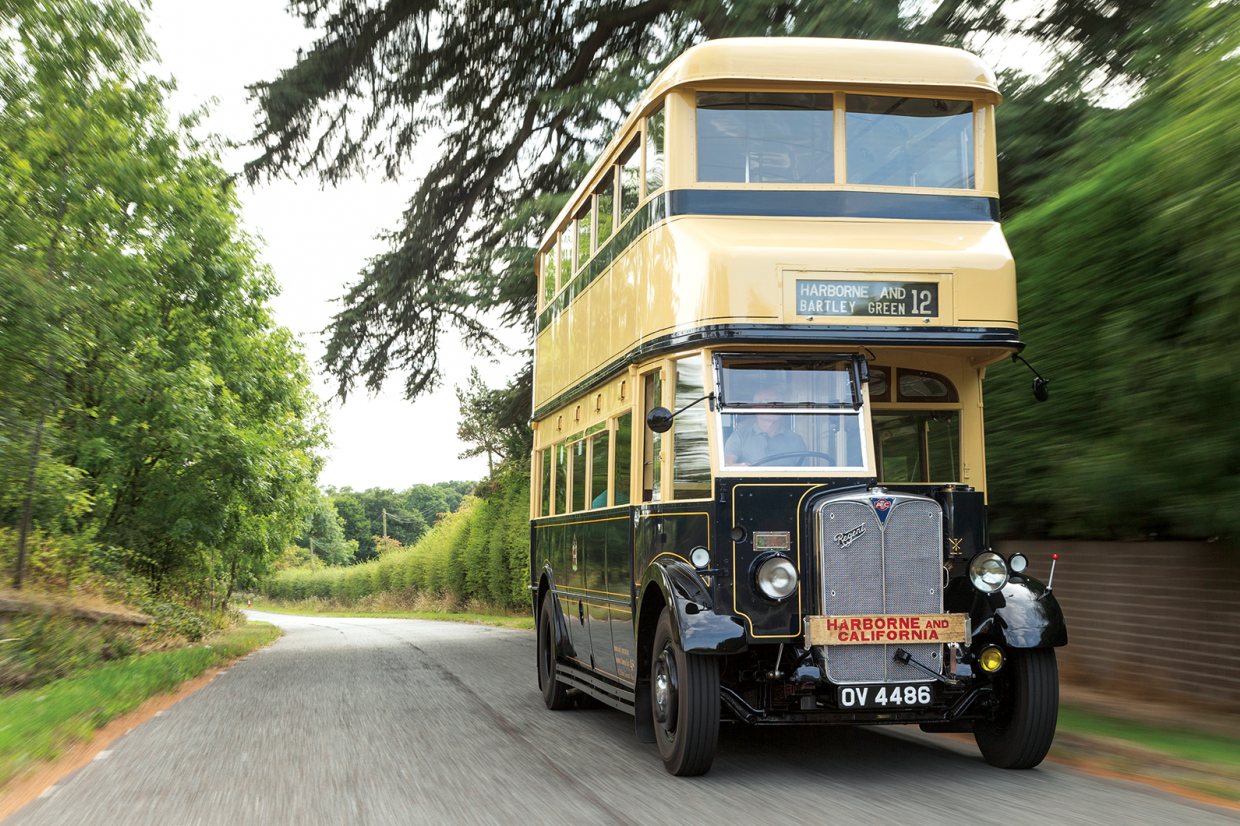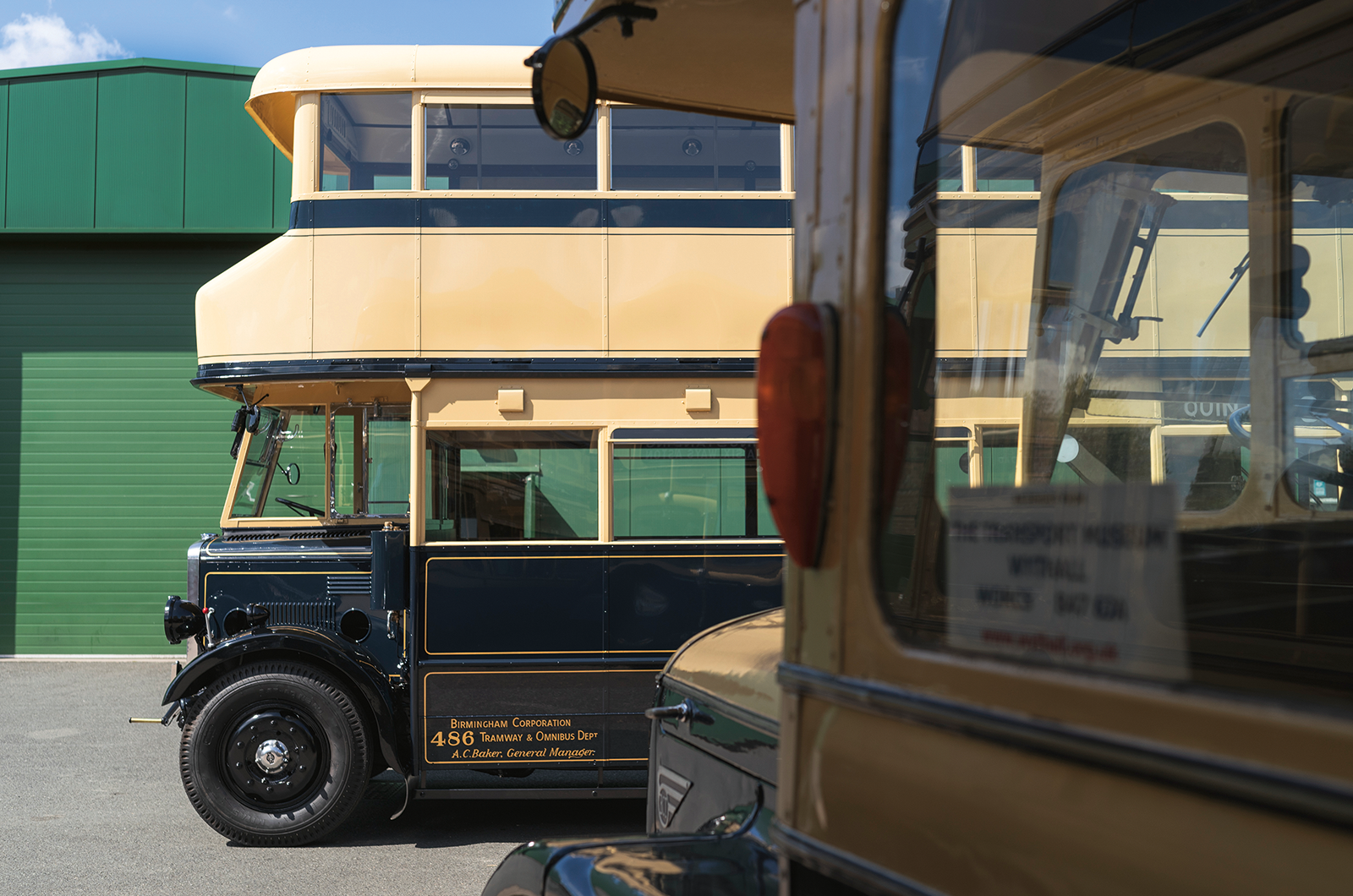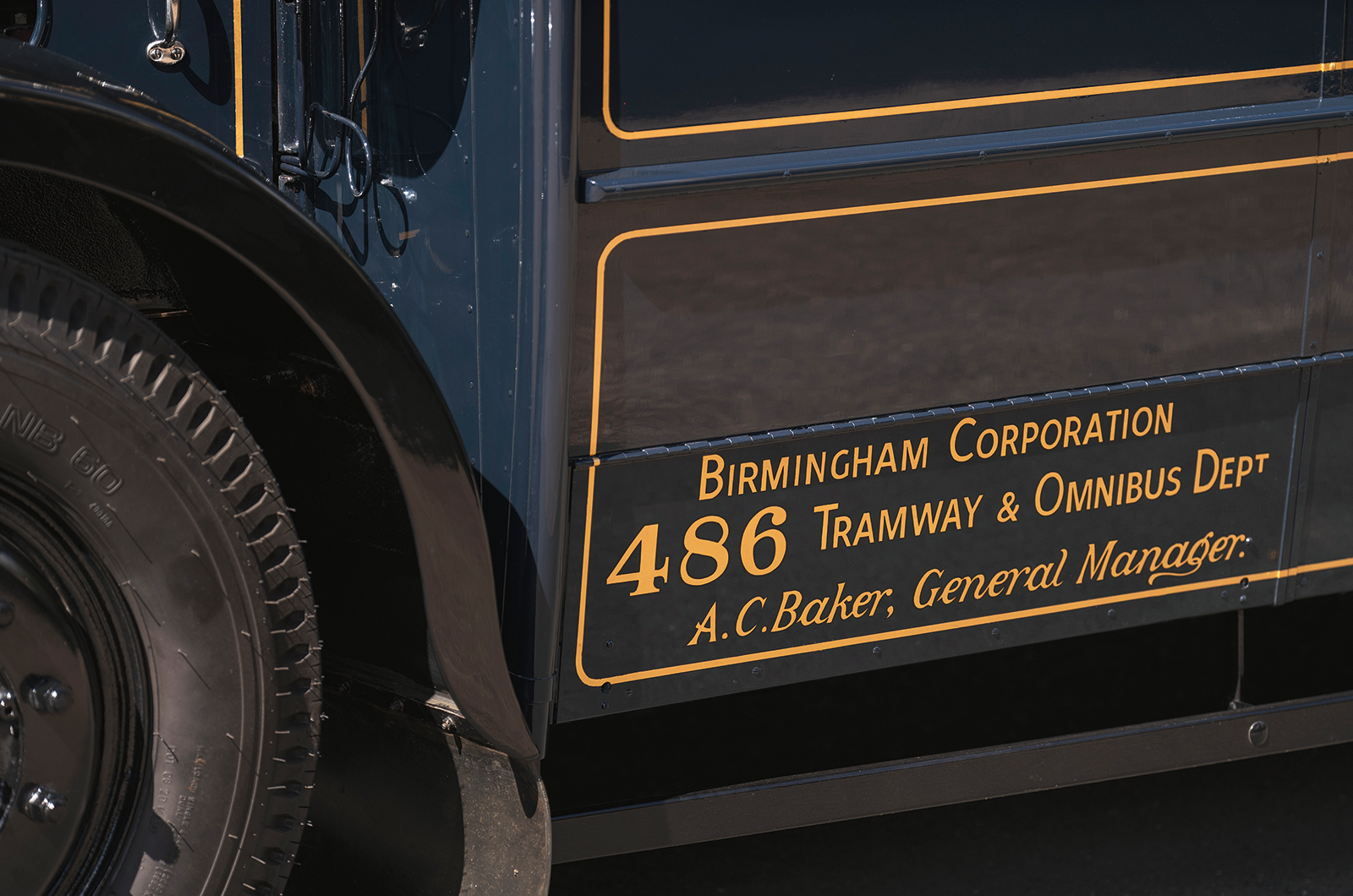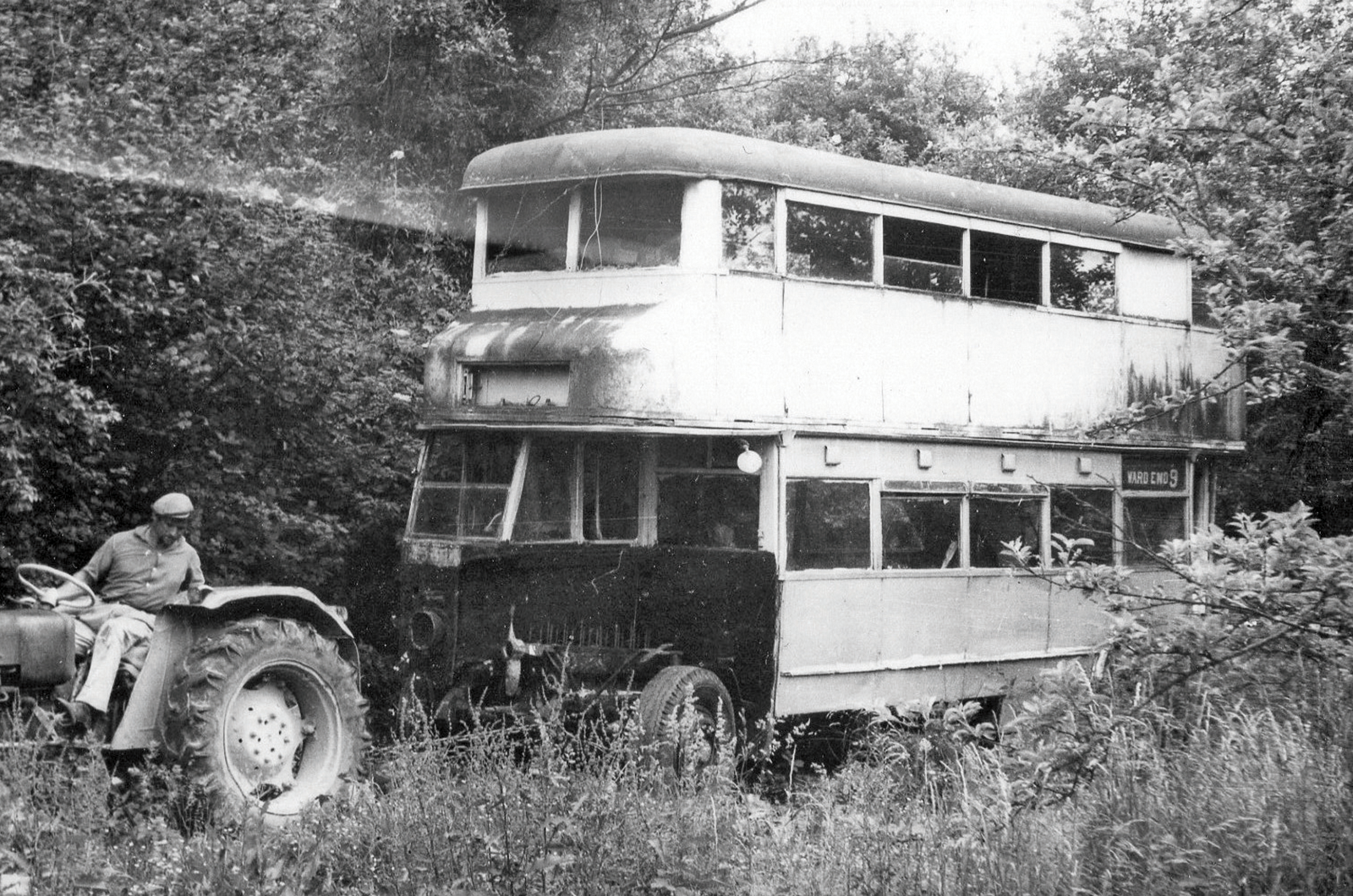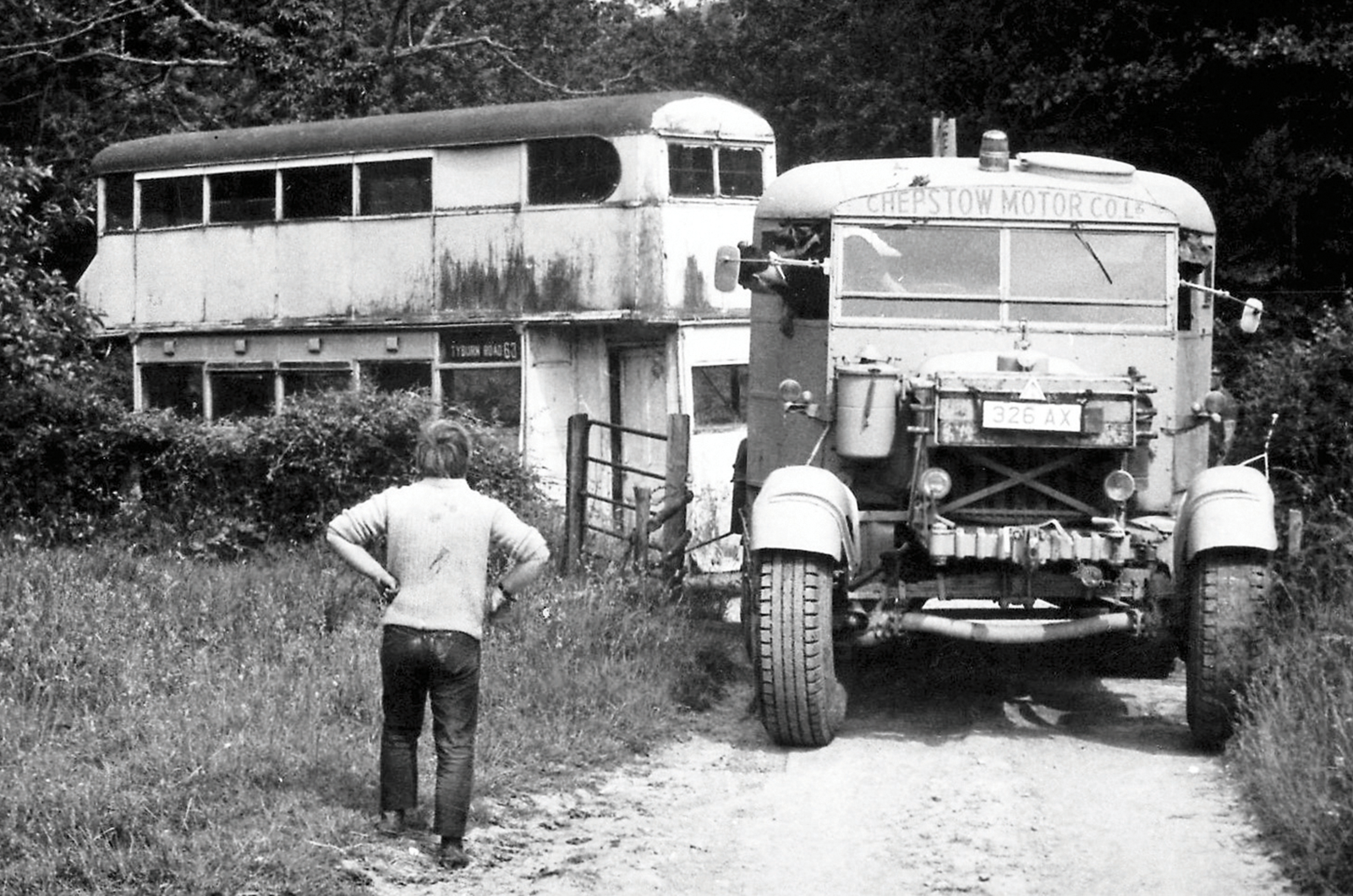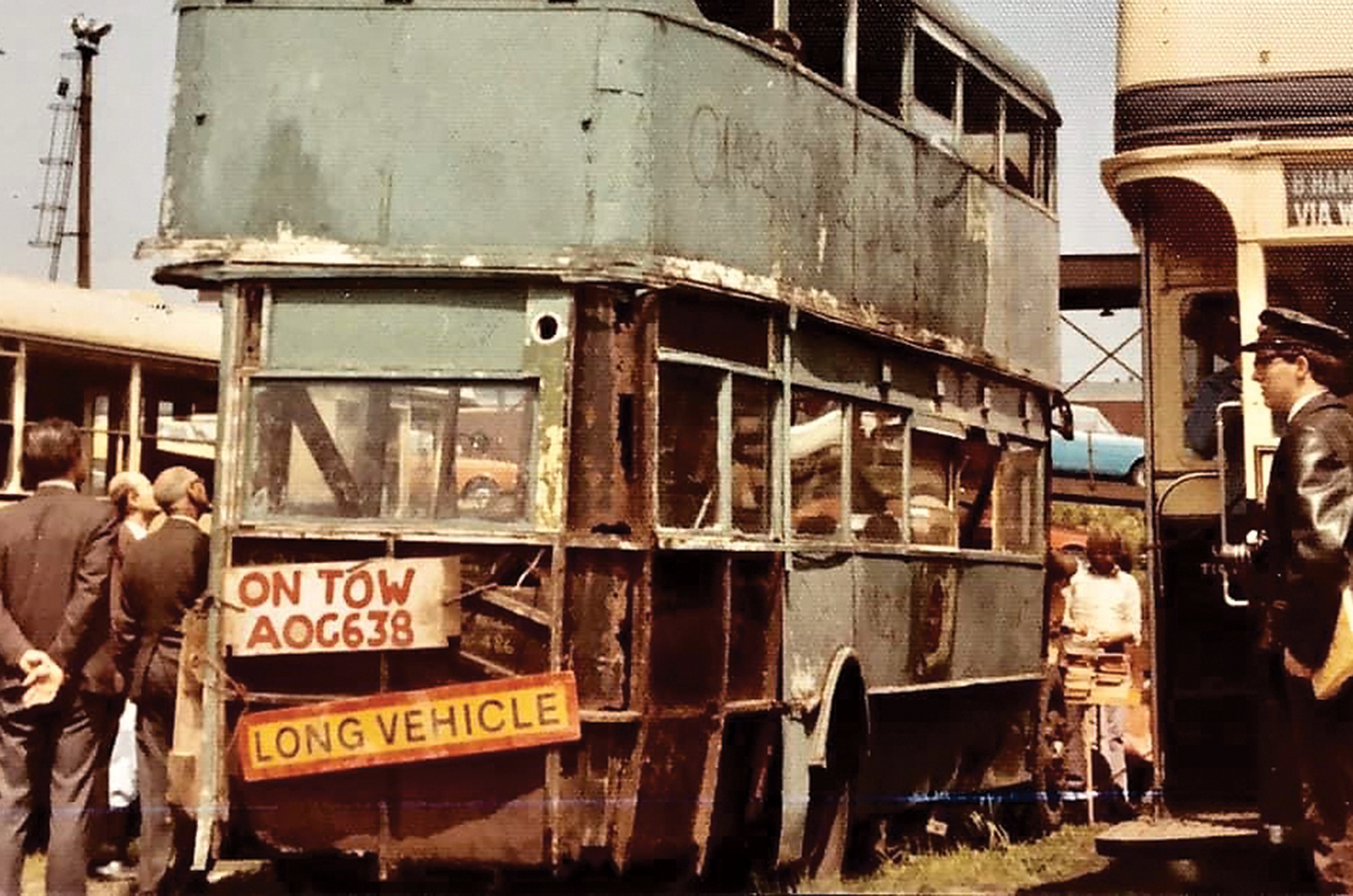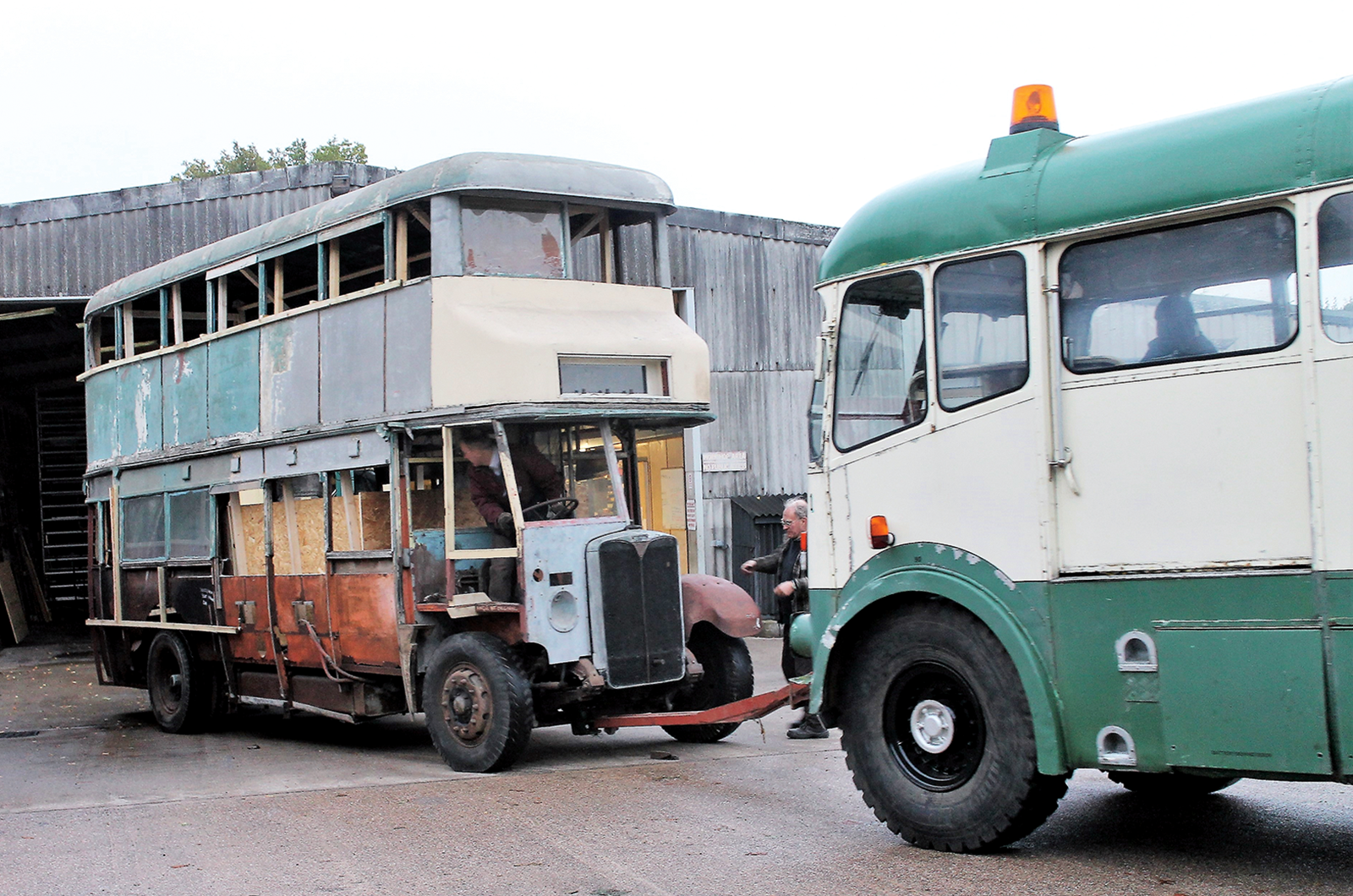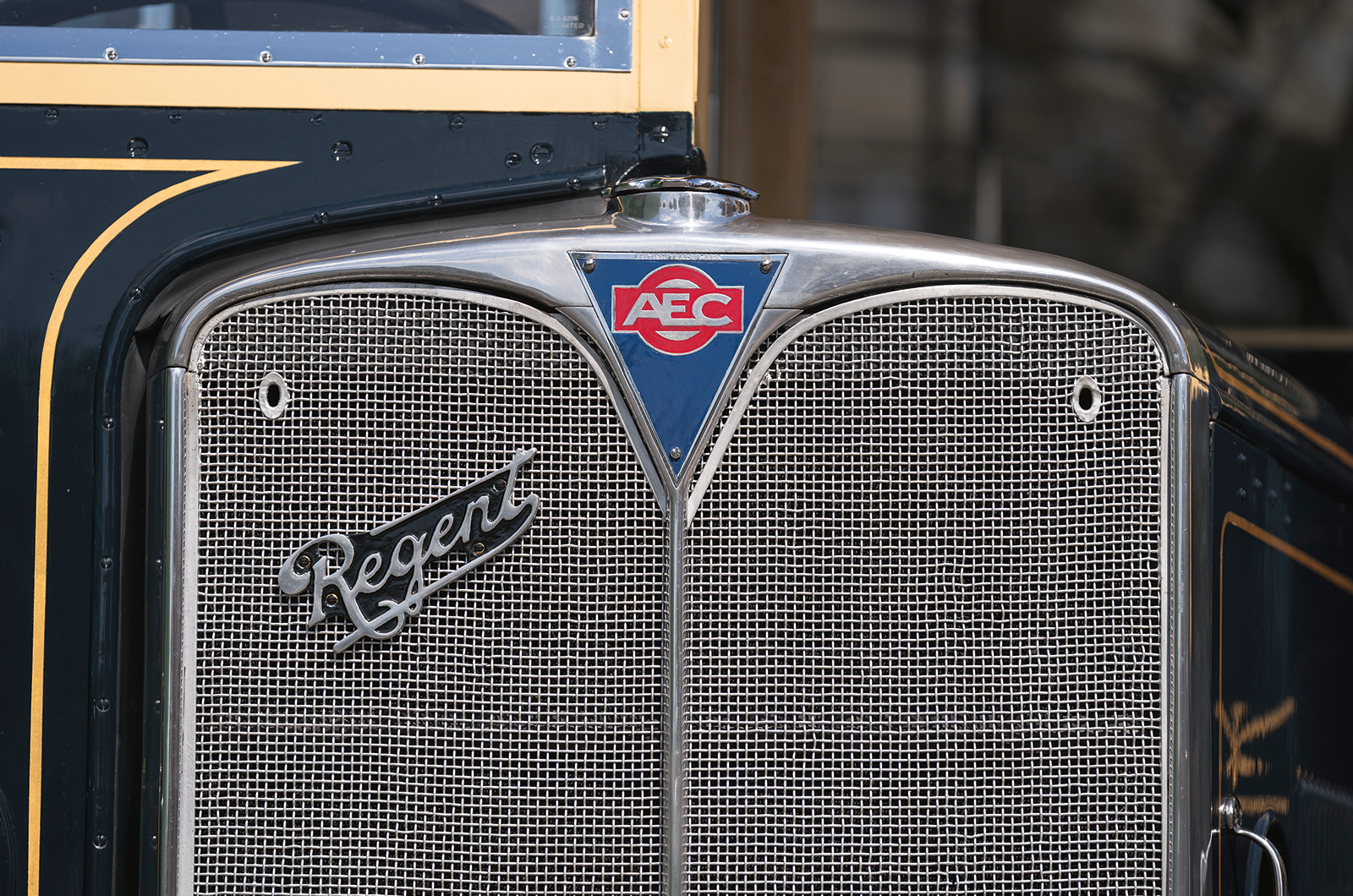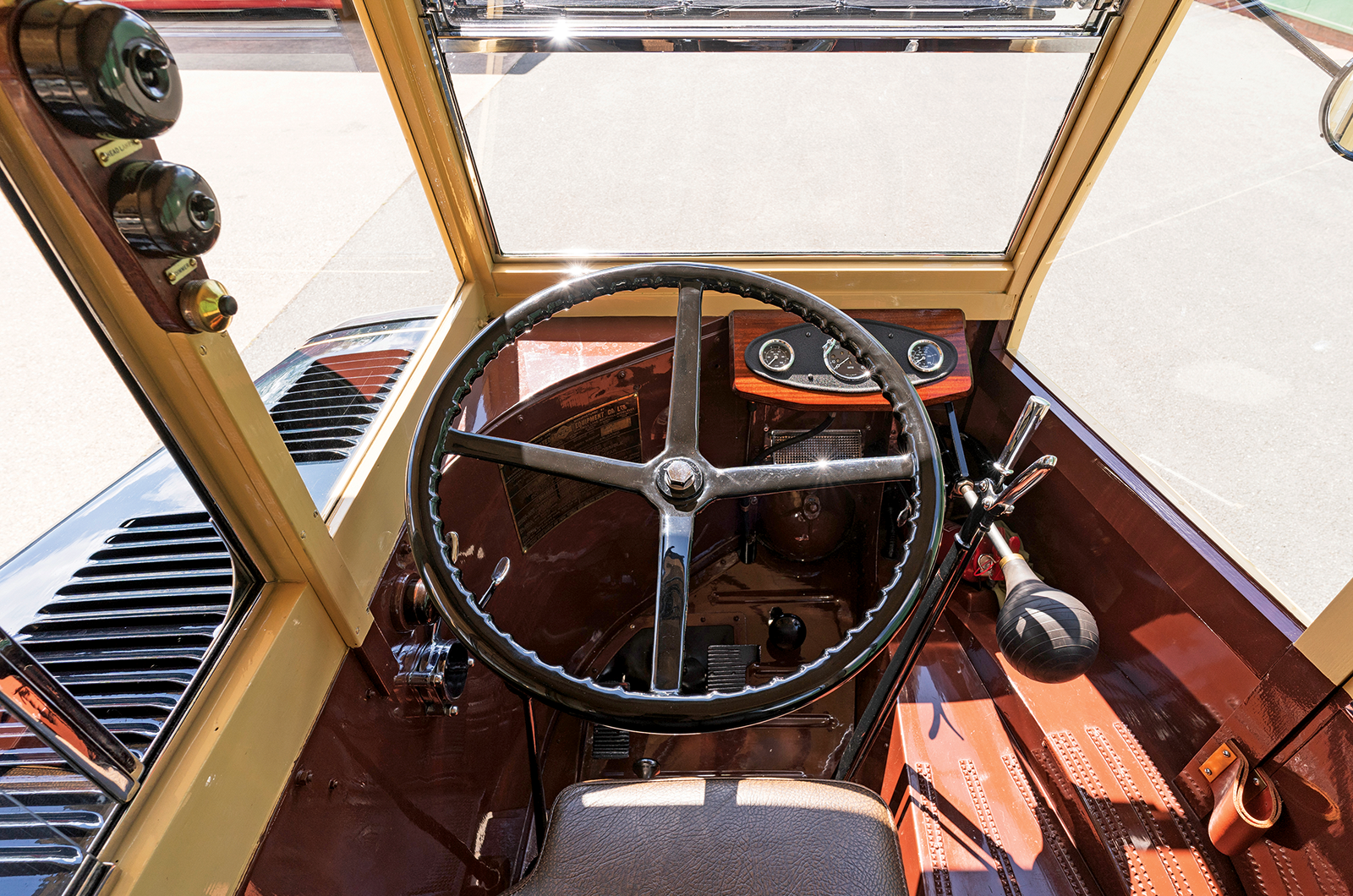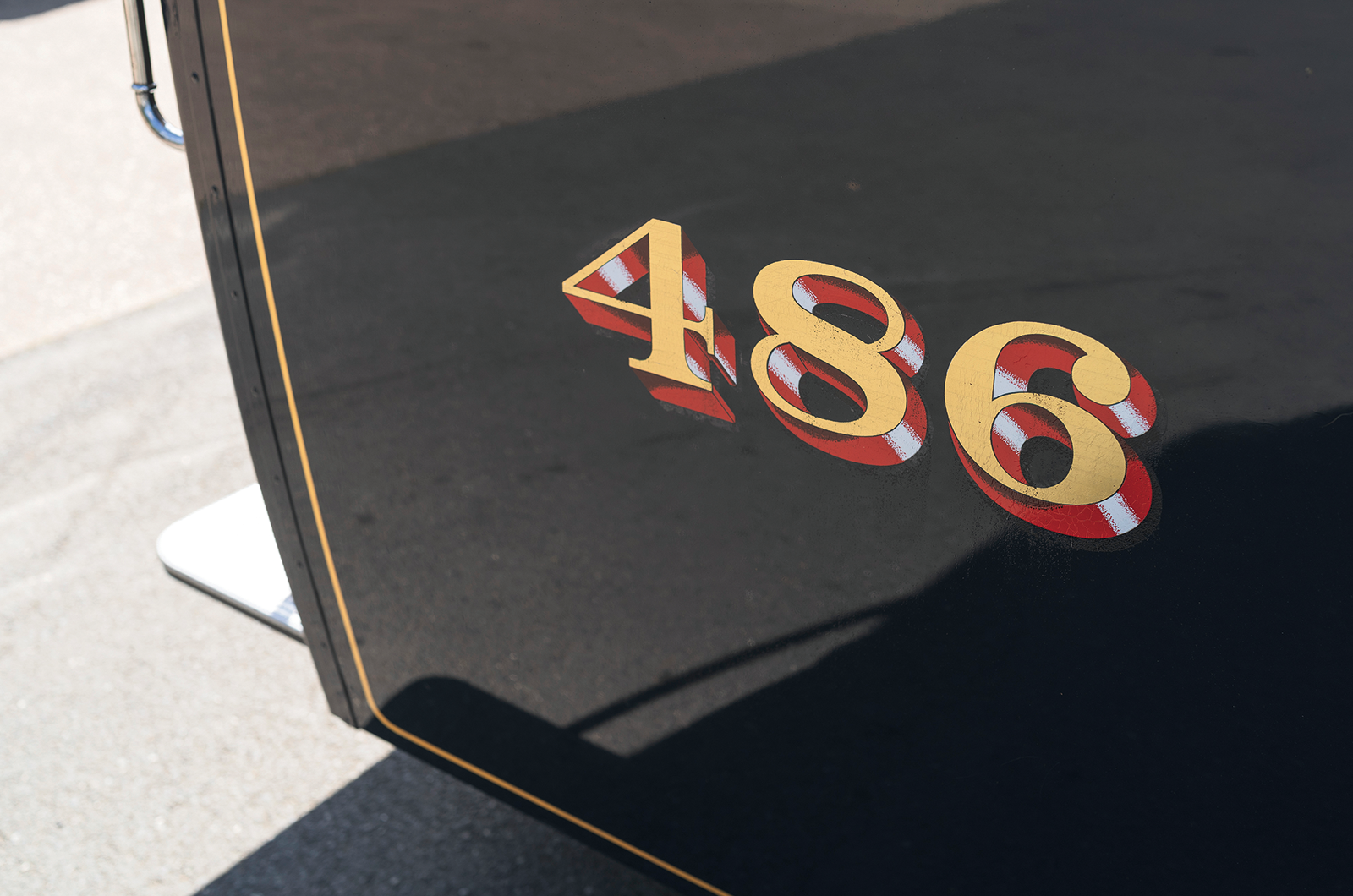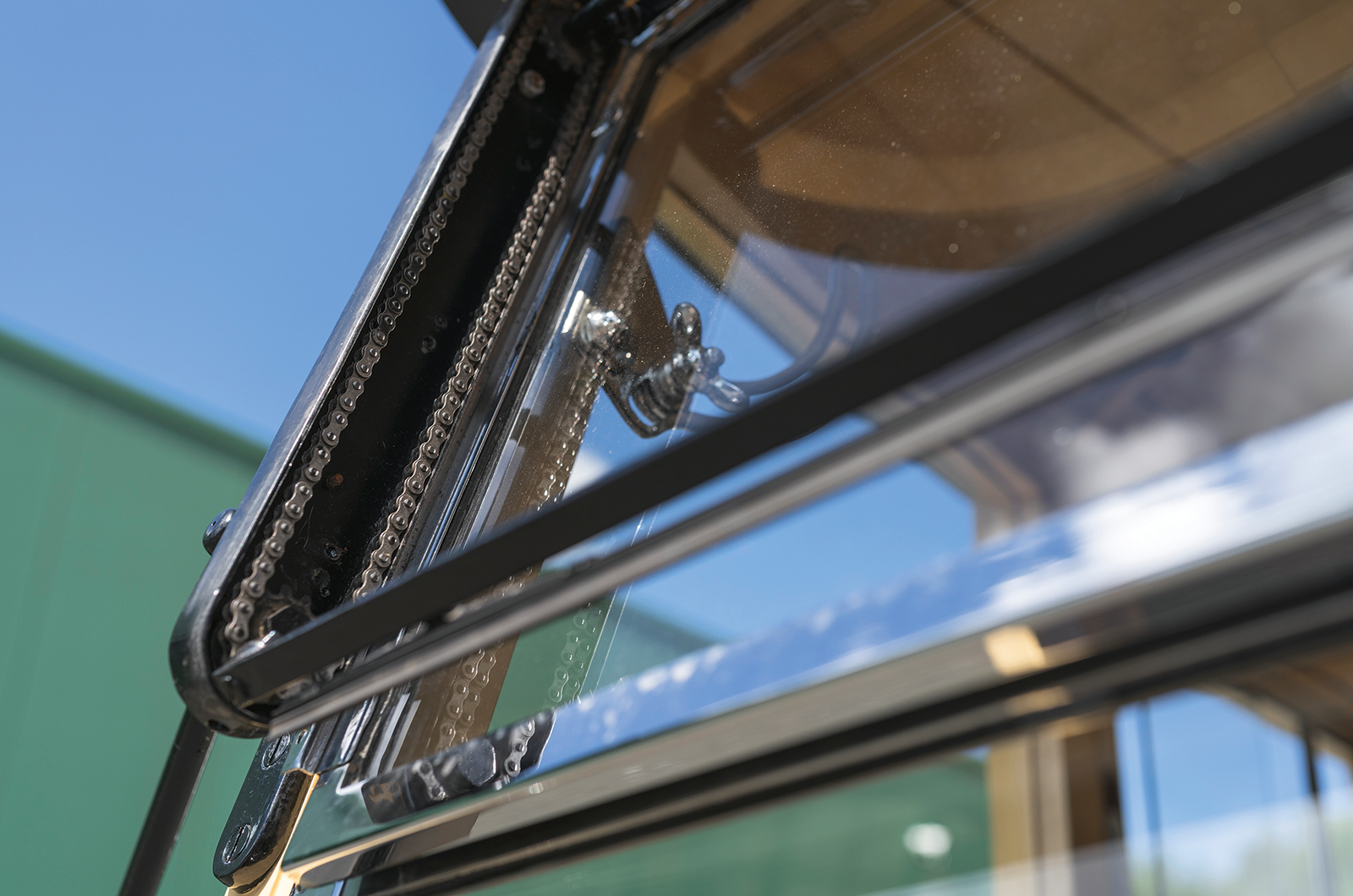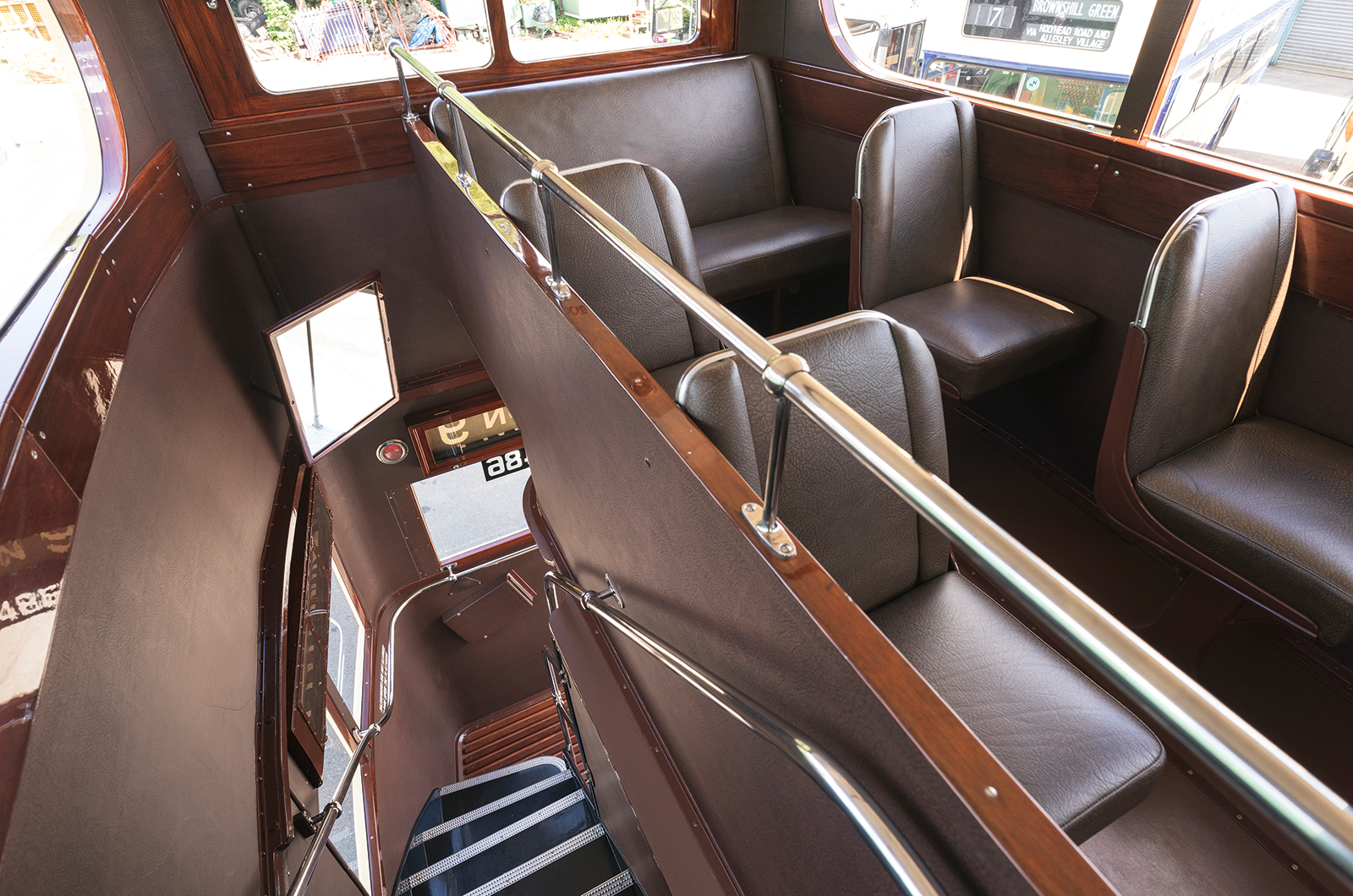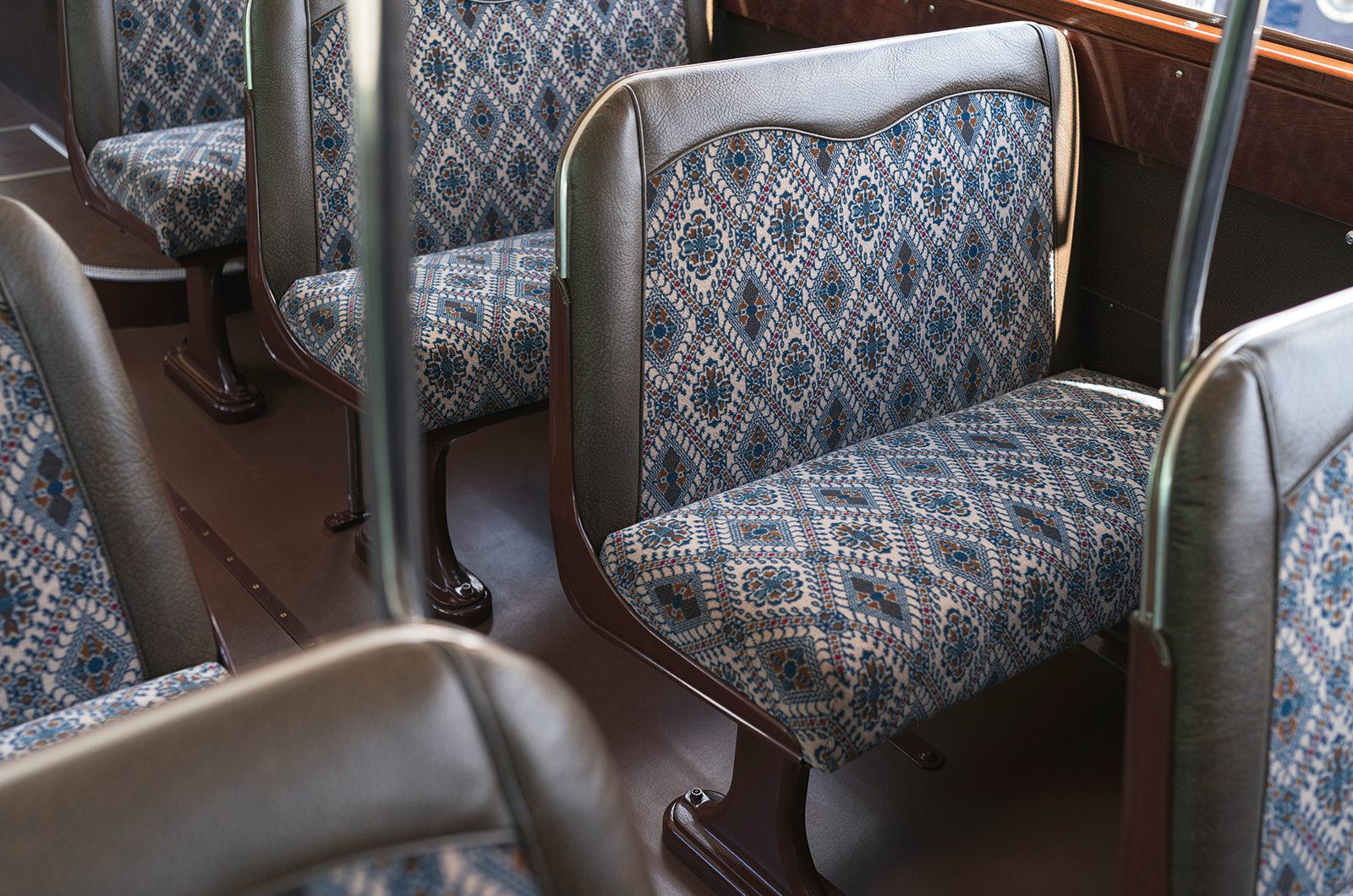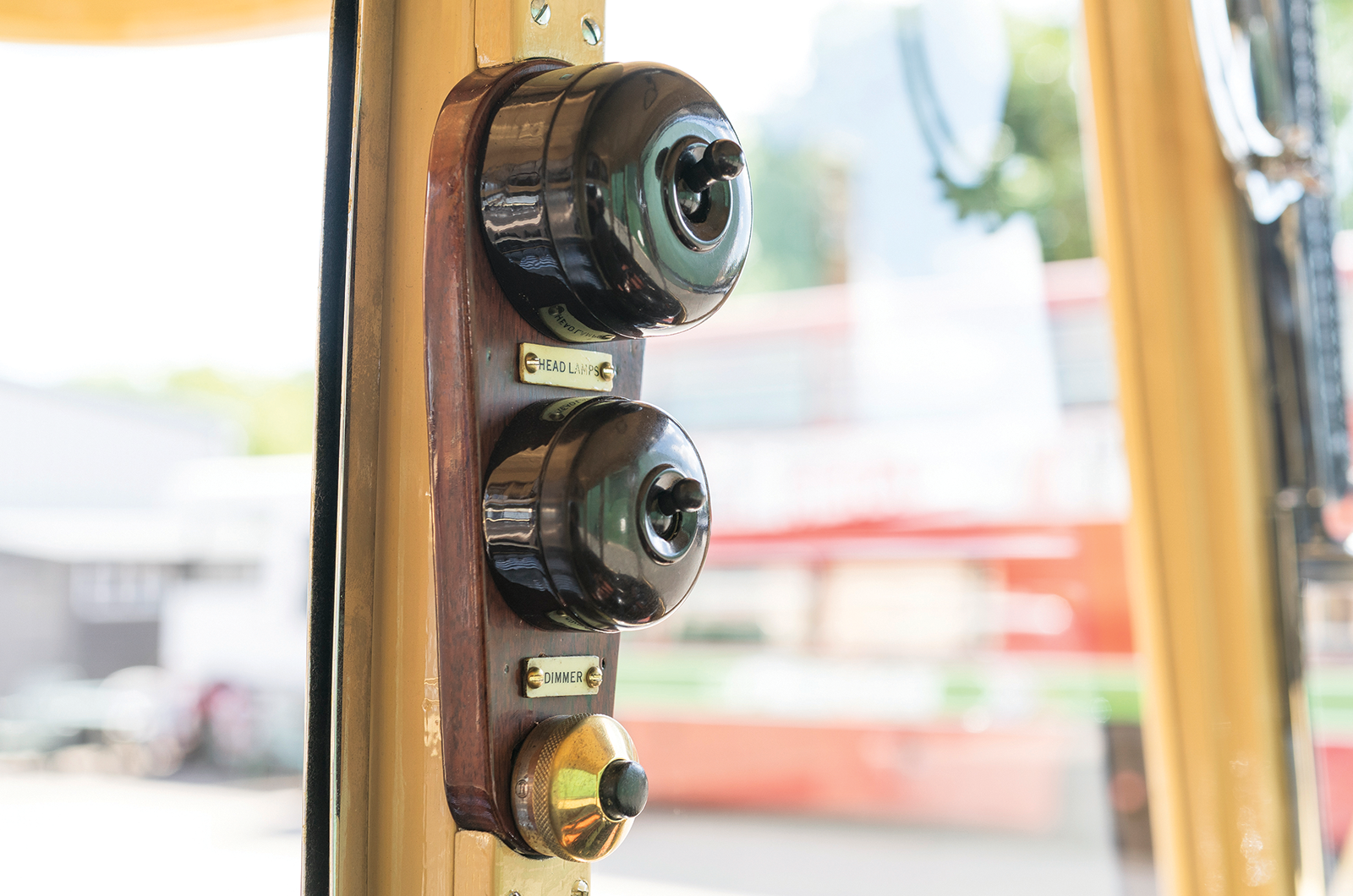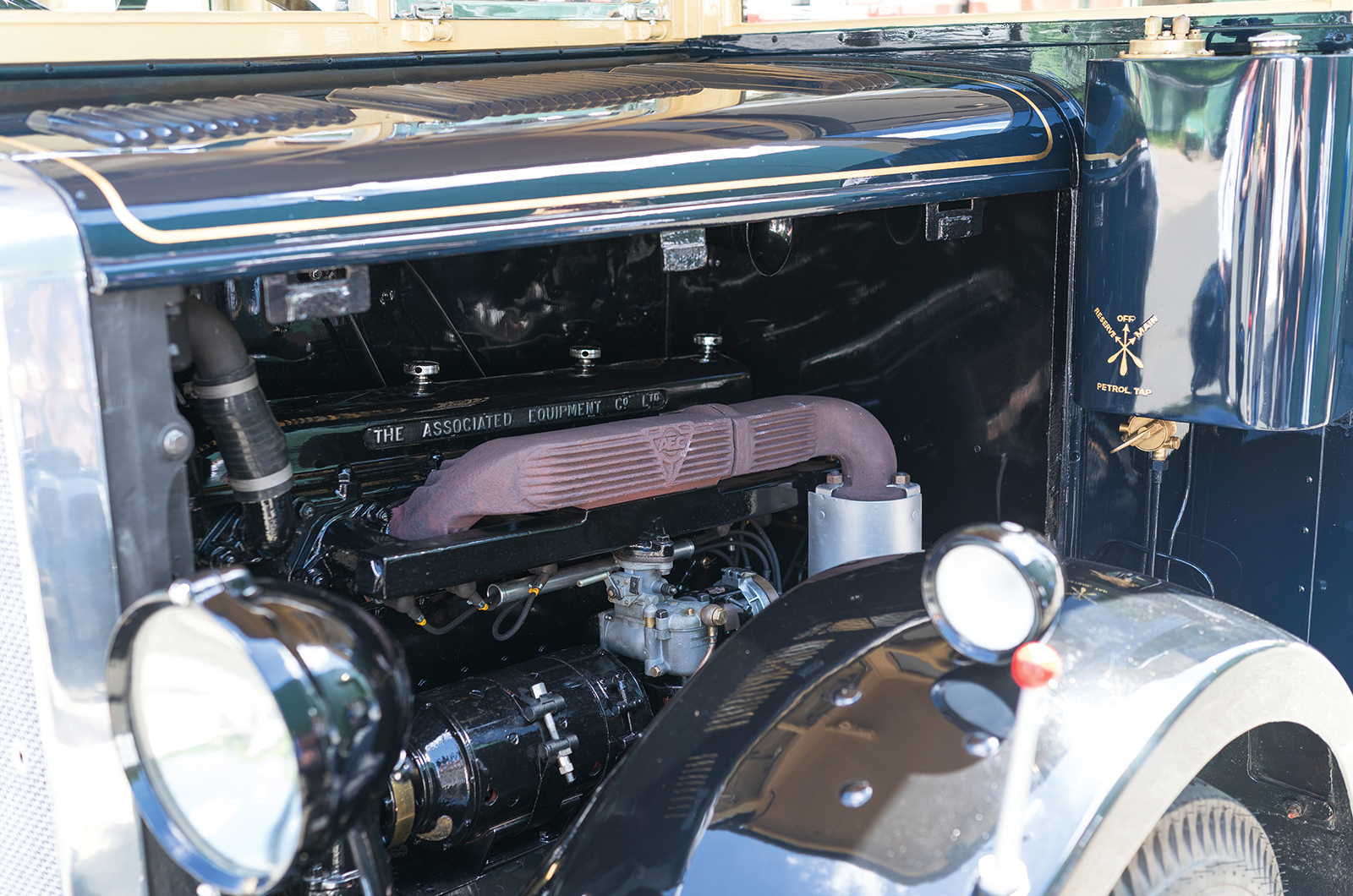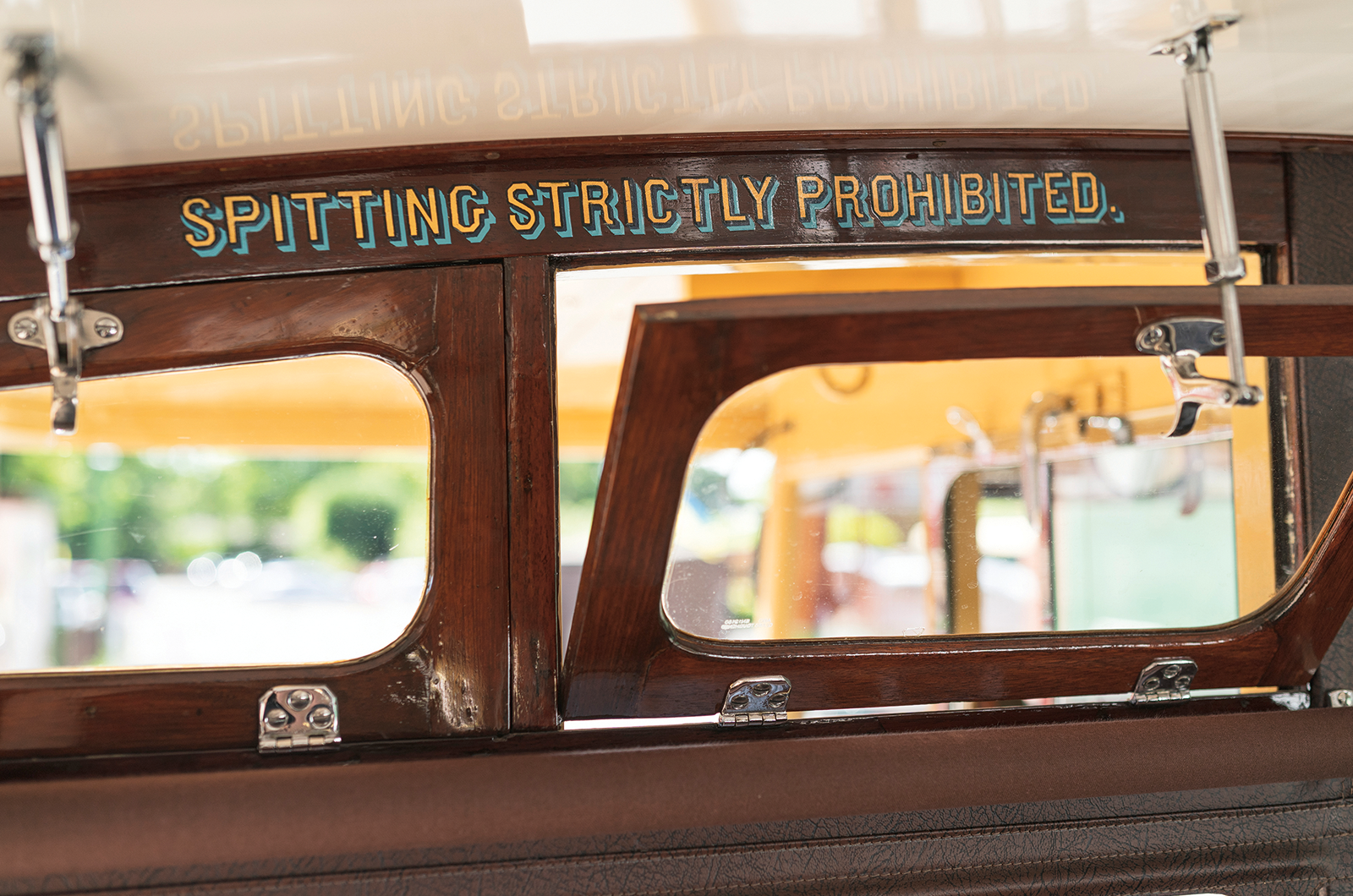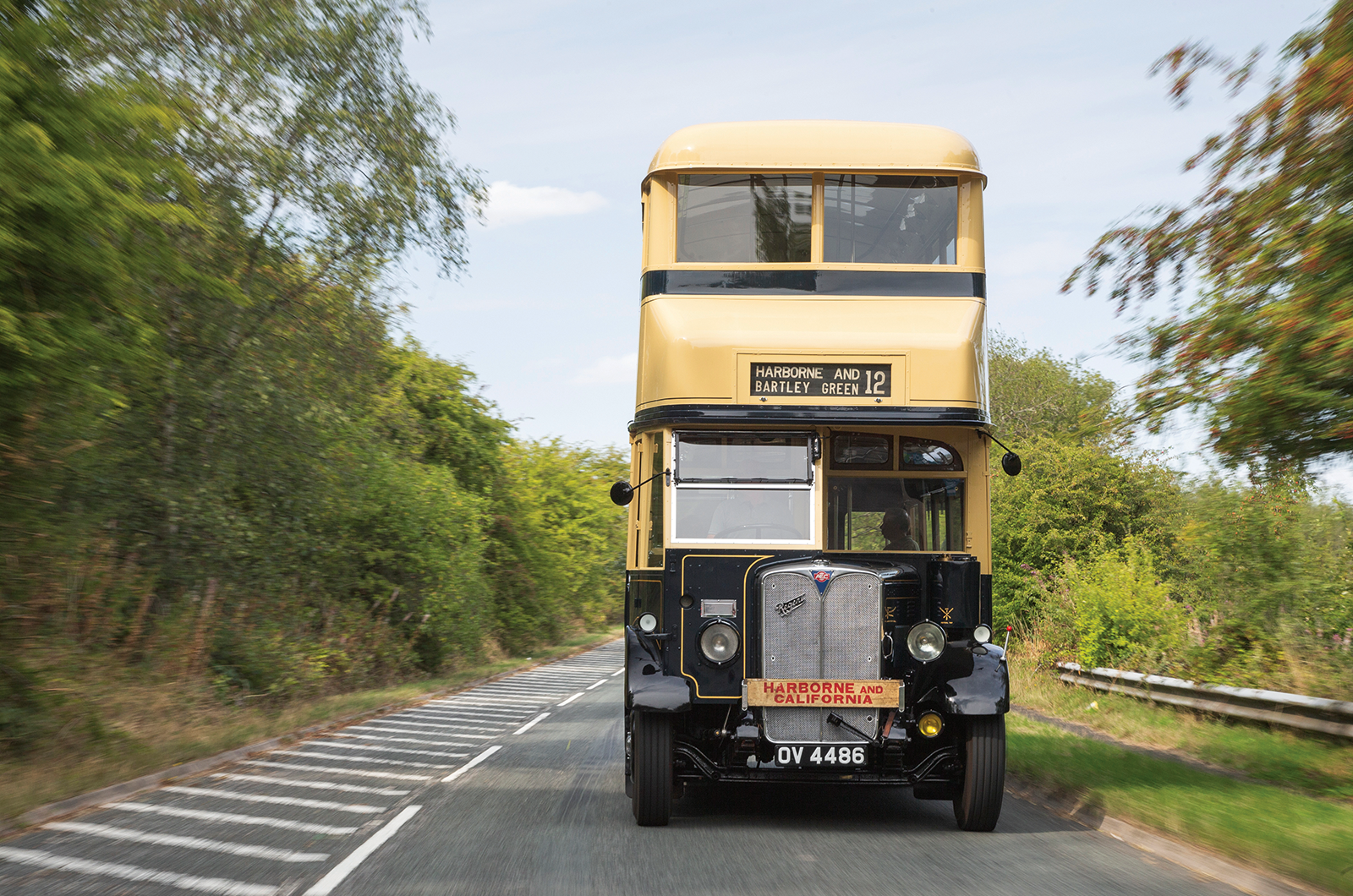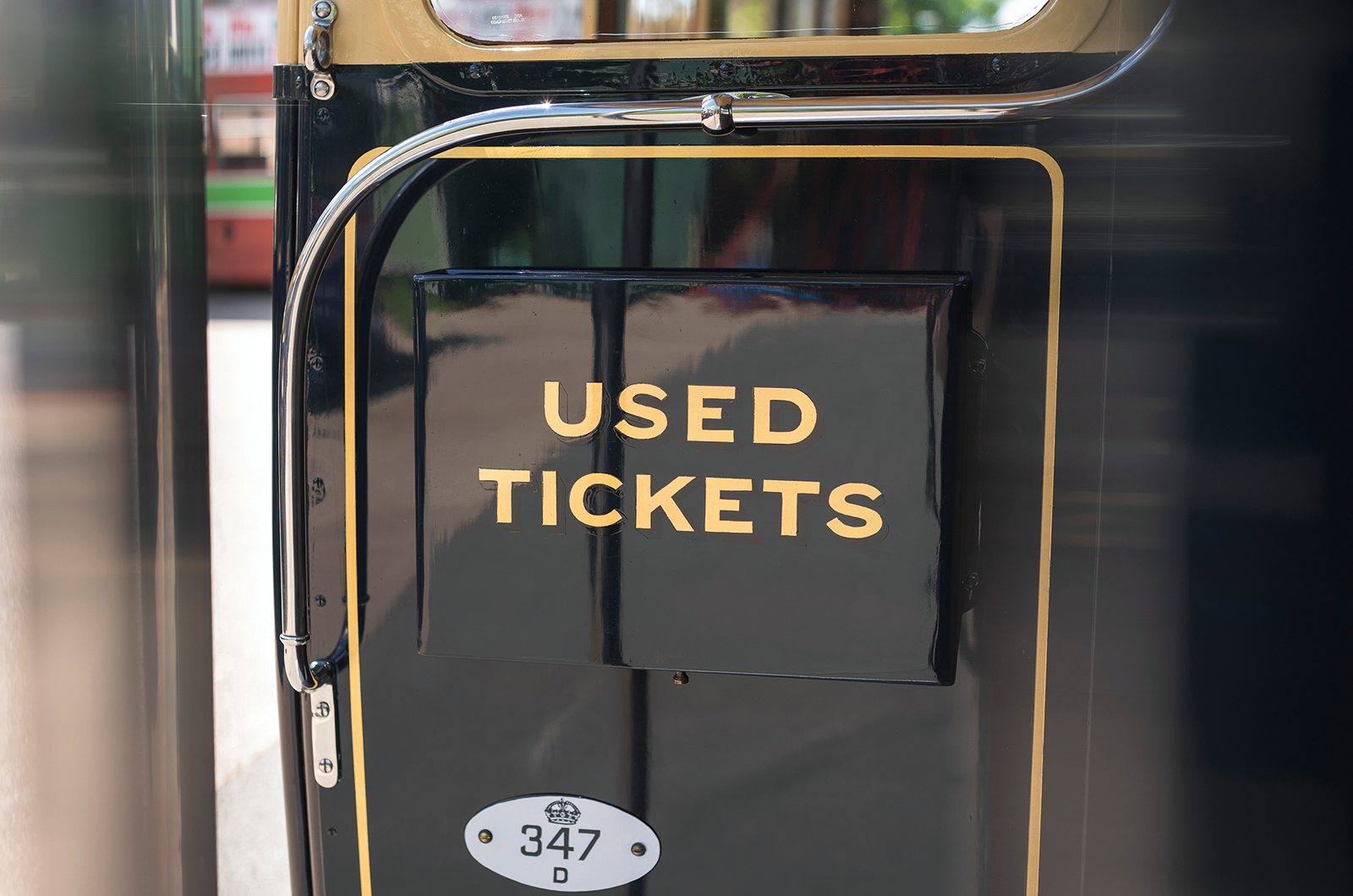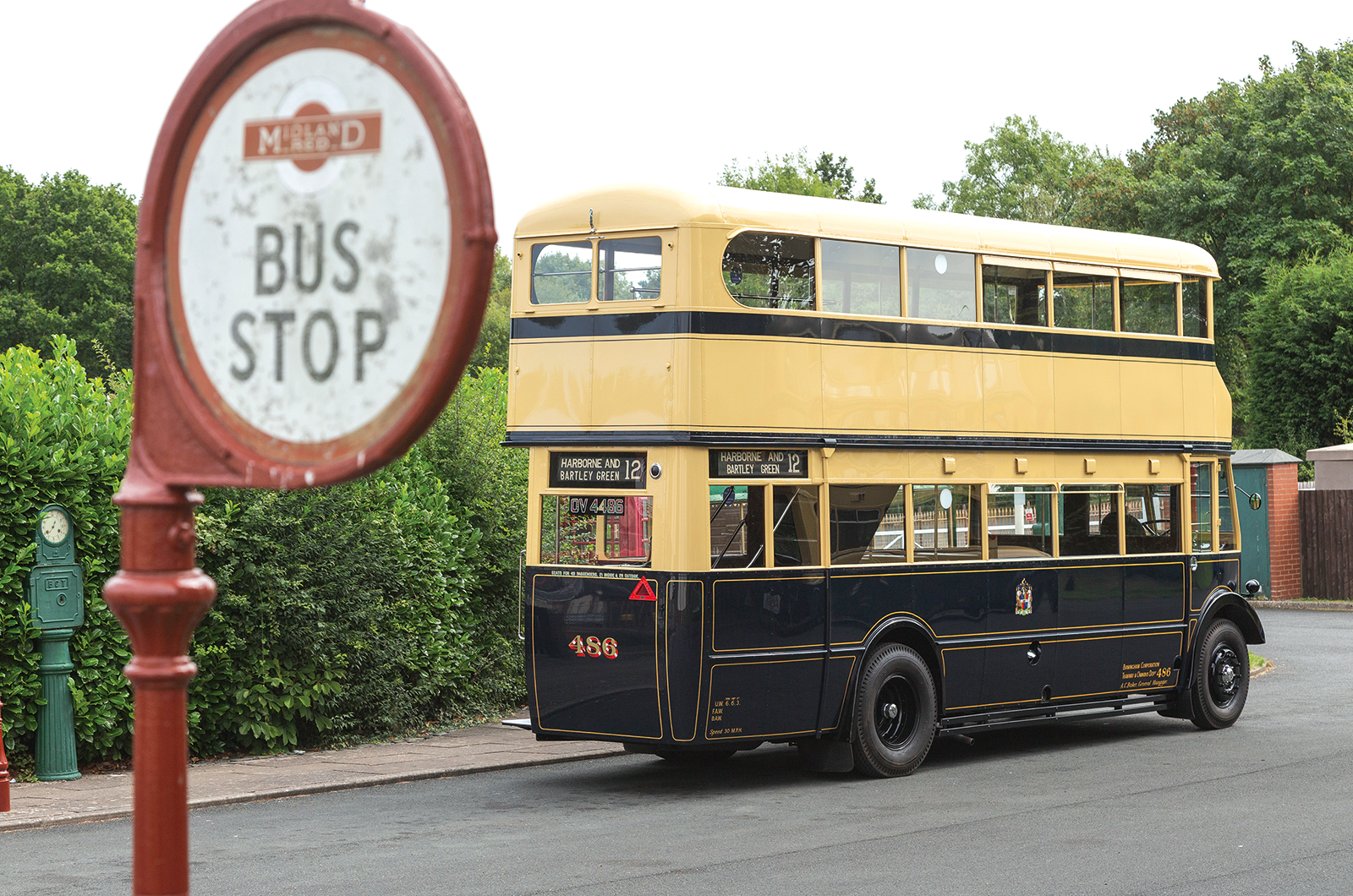Their moment of glory finally arrived at the Classic Motor Show at the NEC in November 2021, where AEC Regent 486 took pride of place on the Federation of British Historic Vehicle Clubs’ stand.
The AEC’s hand-painted signs tell of another age
Step on to the varnished slats of 486’s open rear platform and you enter a long-forgotten world, where exquisite craftsmanship touched even the most utilitarian of devices.
Wythall’s impeccable attention to detail truly takes you back to a different era. Spun-steel light fittings abound, linoleum covers the aisles and this Regent’s original stainless-steel handrails remain in place.
High-quality varnished woodwork surrounds all the windows (some of which can be wound up and down with a chromium handle), and I learn that the difference in seat trim – moquette in BCT colours on the lower deck, bull-hide for the upper-deck seats – meant that ladies sat below, and (generally) male factory workers, in their grubby overalls, sat on the top deck.
You wait ages for a bus… and this time it was worth it
But today I’m up front in an immaculately painted cab, sealed off from the rest of the (rightly nervous) passengers.
Before me is a four-spoke steering wheel of roughly 20in diameter, a staggered but conventional three-pedal layout and a long, straight gearlever sprouting up with an H-pattern shift.
To my right is a vertical handbrake and a prominent bulb-horn poking from the bulkhead. Three dials are mounted below the windscreen for oil pressure, speed and water temperature.
The AEC’s spectacular revival landed the Best Restoration trophy in the 2022 Royal Automobile Club Historic Awards
We’re on the level so we start off in second. I’ve been told to make good use of the revs (this is petrol power, remember), especially between gears when downchanging, the Regent’s being a traditional crash ’box.
But take your time when swapping ratios and it all blends nicely. The Regent happily sits at 35mph – 40mph being its maximum speed – and feels immensely stable, with little play in the steering, although I’d need to renew my gym membership if I were to drive through a city every day.
AEC’s patented triple-vacuum servo brakes are strong and reassuring for this amateur bus driver, and in general the Regent has the same taut, thoroughly engineered feel that you’d imagine its first Brummie driver would have relished more than 90 years ago.
In other words, it’s an absolute delight.
Images: Luc Lacey
Thanks to: Transport Museum Wythall
Factfile
AEC Regent 1
- Sold/number built 1929-’33/1845
- Construction pressed-steel chassis, cold-rolled pillar frame, aluminium panels
- Engine all-iron, ohv 6120cc straight-six, Autovac fuel system
- Max power 95bhp @ 3200rpm
- Max torque n/a
- Transmission four-speed manual, RWD
- Suspension semi-elliptic leaf springs with dampers front and rear
- Steering Marles worm and roller
- Brakes drums, with triple-vacuum servo
- Length 25ft (7620mm)
- Width 7ft 6in (2286mm)
- Height 14ft 6in (4420mm)
- Wheelbase 15ft 6½in (4730mm)
- Weight 14,112lb (6401kg)
- 0-60mph n/a
- Top speed 40mph
- Mpg 4-6
- Price new £1650
- Price now £1million (est)*
*Price correct at date of original publication
Enjoy more of the world’s best classic car content every month when you subscribe to C&SC – get our latest deals here
READ MORE
Also in my garage: a tank engine
Derek Mathewson: behind the doors of Bangers & Cash
Classic shrine: Great British Car Journey
Simon Hucknall
Simon Hucknall is a senior contributor to Classic & Sports Car
